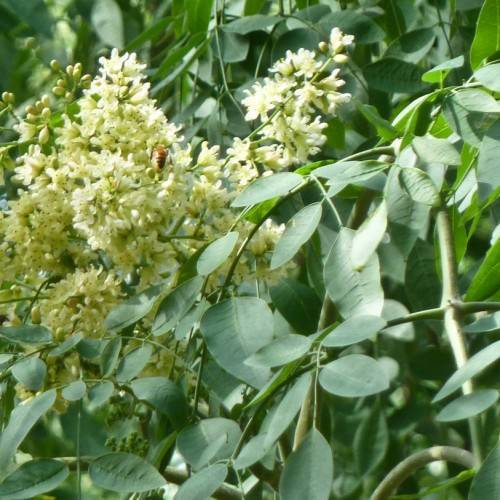
Japanese pagoda tree
Sophora japonica 'Regent'
Cycle:
Perennial
Watering:
Average
Hardiness Zone:
4 - 8
Flowers:
Flowers
Sun:
Full sun,part shade
Leaf:
Yes
Growth Rate:
High
Maintenance:
Low
Drought Tolerant:
Yes
Care Level:
High
watering
Japanese pagoda trees should be watered once per week in the summer, unless there is an extended period of high temperatures or drought when supplemental watering may be necessary. In the cooler season, when the tree is not actively growing, reduce the weekly watering to every other week or less. Make sure the soil is moist but not soggy, and water slowly so that the root system is saturated. If possible, avoid overhead watering, spraying any foliage or directly wetting blossoms. During hot summer months, applying a layer of organic mulch such as bark can help the soil retain moisture.
sunlight
Japanese pagoda tree prefers full sun to light shade, with 4 to 6 hours of direct sunlight each day in order for it to grow optimally. During the summer months, the tree needs full exposure to the sun throughout the day, but during the cooler winter months, partial shade early in the morning or late afternoon is acceptable.
pruning
The Japanese pagoda tree (Sophora japonica 'Regent') should be pruned in late winter or early spring. Pruning should be light, aiming to remove smaller branches and crossing twigs. This will help maintain shape and promote overall plant health. Dead, dying and crossing branches should be removed to reduce the chance of disease. As the tree continues to mature, more radical pruning can be performed every 4 to 5 years. This should involve cutting 1 third of the largest branches back to the trunk.
